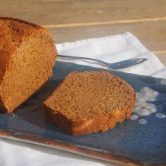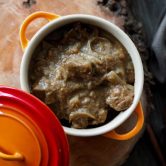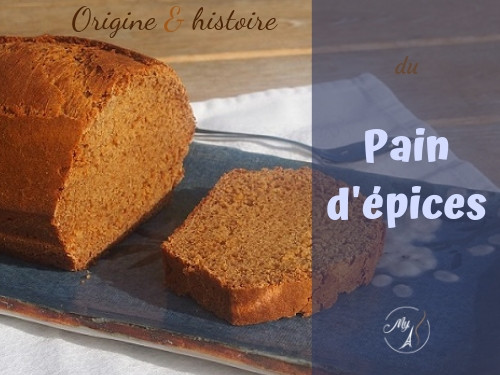A Chinese invention, an energy snack for Mongolian warriors, a delicacy for European nobility, a source of income for the monks, a traditional fairground favorite… Gingerbread does have quite a long history!
The story behind gingerbread
French pain d’épices is a soft and flavorsome cake, a thousand times better homemade than those sold in supermarkets. I won’t bore you with the story of each and every dish but this one is so amazing and eventful that I can’t resist. The first gingerbread was called the mi-king, wheat and honey bread invented in the 10th century for the emperors of the Chinese Tang Dynasty.
It was brought to Europe by the Mongol warriors who appreciated its high energy value and made it a staple of their daily combat rations. Once in Europe, all sorts of rare spices were added to this bread: cloves, nutmeg, cinnamon, or ginger. These spices were very expensive at that time, which made gingerbread a very valuable treat, loved by the nobility. A scarcity enhanced by the ancient manufacturing process, the dough coated with honey had to sleep for 6 months. Gingerbread was the symbol of wealth and power.It is thus natural that the production of gingerbread was supported by the monks who made it a sacred cake with medicinal properties, but they didn’t mind selling it to everyone.
Gingerbread became one of the France favorite delicacies and thereby of fairs and festivals. It was the star of the Foire du trône fair, a fair which used to be named the Gingerbread Fair and was represented by a pink gingerbread pig.
Why a pig? Philippe of France, son of Louis VI Le Gros – King of France in the 11th century – died in a horse riding accident caused by a stray pig in the streets of Paris. King Louis VI Le Gros then forbade any pig from walking freely in the streets of Paris, but finally gave in upon te insistence of the St. Antoine monks, but only if they were kept on a leash. In recognition, the St Antoine monks created a gingerbread-shaped pig. Old Saint Antoine Fair was renamed the Gingerbread Fair before going on to become the Foire du trône fair as we know it today.And what is the connection with the gingerbread man? It doesn’t come from China, nor from France, but England.
The first known human-shaped gingerbread men were served at the court of Queen Elizabeth I of England (16th century) who loved to offer her distinguished guests an edible statuette of themselves. The human-shaped gingerbread cookie, often decorated with frosting or with just the face and buttons drawn on it, became a tradition, enhanced by the tale of the little gingerbread man.
Recipes with gingerbread



Subscribe to my newsletter to get your e-boon on French gingerbread with recipe, story and 6 ways to use gingerbread in cooking or baking the French way.



Oh not just the picture of a lovely woman – the recipes ! And i have just only started to read about onion soup, ginger bread, stew meat cooked in beer
Merci !! If you’re on my mailing list you’ll receive a nice free e-book on this. Have you already subscribed?